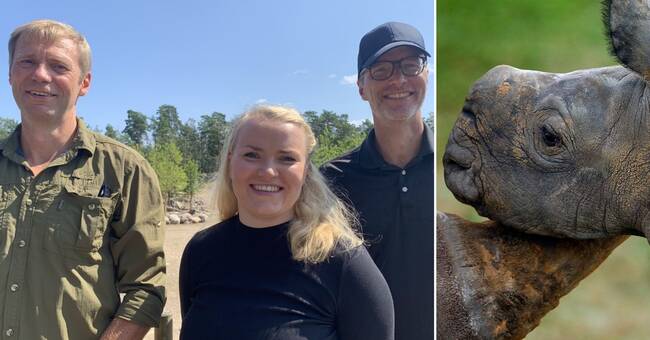Fifteen years ago, there were about 70 black rhinos left in Ngulia, Kenya.
Then it was decided to turn the park into a national park, primarily to curb poaching against rhinos but also to preserve life on the savannah.
Today, there are 150 rhinos in the park, but due to the fact that poaching is increasing again, they work diligently to ensure the safety of the rhinos.
- Previously, the park rangers had to collect SD cards from cameras scattered throughout the park.
It took about three months to do this, and thousands of images had to be analyzed.
Now the idea is that the images come directly via a link to the park rangers' mobiles via apps, and our algorithm also sorts all the images so that only the interesting ones are sent on, says Amanda Tylén, who has been involved in developing the algorithm.
Used Kolmården's rhinos
The algorithm has been developed with the help of the four rhinos found at Kolmården Zoo, where a lot of film and images have been collected on the rhinos to be able to teach the computer to recognize the animal in the wilderness.
Kolmården's chief veterinarian Torsten Möller believes that it is a natural job on the part of the deep park to help with projects like this.
- The animals must be anesthetized so that the researchers can access them and be able to get really close to the rhinos.
But of course we only put the animals to sleep when other things such as animal care have to take place, so anesthesia never takes place unnecessarily, he says.
See more about Amanda and Sara's project in the clip above.

